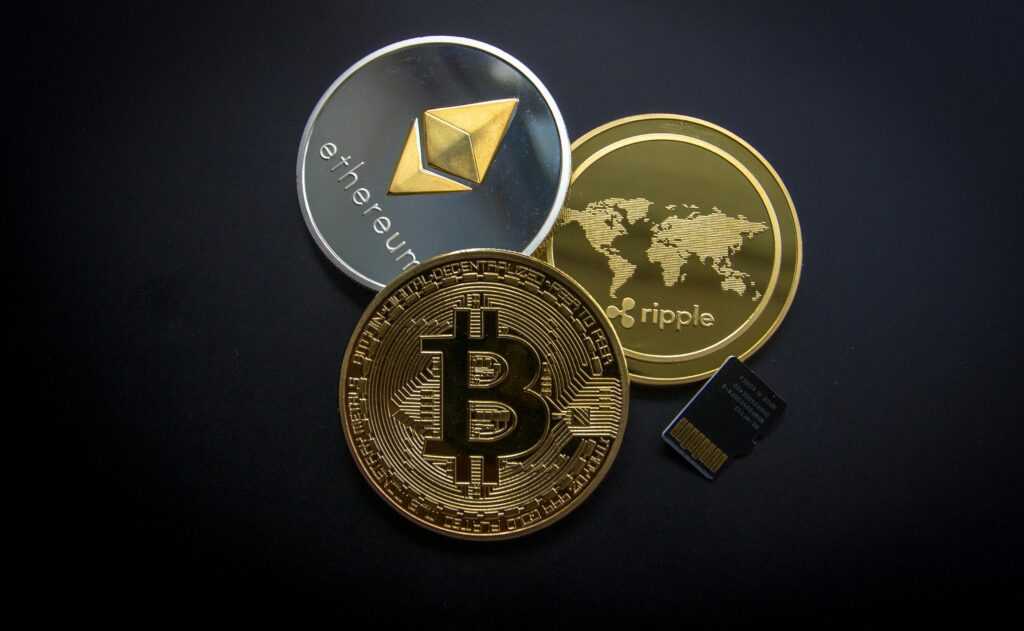Understanding the Cryptocurrency Market Trends
The cryptocurrency market is dynamic, with various factors influencing its trends. Understanding these factors is crucial for making informed investment decisions.
Factors Influencing Cryptocurrency Prices
Several factors can impact cryptocurrency prices. Market demand and supply play a primary role. When demand for a specific cryptocurrency increases, its price usually rises, and when supply exceeds demand, prices often fall. For example, Bitcoin’s price surged in 2021 due to increased demand.
Another key factor is technological advancements. Upgrades and innovations to a blockchain can attract investors, leading to higher prices. Ethereum’s transition to Ethereum 2.0, for instance, has affected its market value positively.
Regulatory news also significantly influences cryptocurrency prices. Announcements of favorable or unfavorable regulations by governments can cause price fluctuations. For instance, China’s crackdown on cryptocurrency mining initially led to a drop in Bitcoin’s price.
Market sentiment isn’t to be overlooked. Events and news can shape investor perceptions and drive market trends. Positive news, integrations, or endorsements often result in price increases, while negative news can cause sharp declines.
Impact of Global Economic Events on Cryptocurrencies
Global economic events can have substantial effects on cryptocurrency values. Economic instability or crises in traditional markets often lead investors to seek alternative assets like cryptocurrencies. In the 2020 COVID-19 pandemic, many turned to digital assets as a hedge, pushing up prices.
Monetary policies abroad also impact the market. Quantitative easing and low-interest rates can make traditional assets less attractive, driving investors toward cryptocurrencies. For instance, the Federal Reserve’s policies have sometimes correlated with Bitcoin price movements.
Political events carry weight, too. Elections, policy changes, and geopolitical tensions can result in volatility in cryptocurrency markets. Events like Brexit or the U.S.-China trade war have caused notable shifts in digital asset prices.
Lastly, macroeconomic indicators like inflation rates and employment figures can’t be ignored. High inflation often leads investors to hedge with assets like Bitcoin, influencing its price trajectory. For example, rising inflation rates in 2022 contributed to increased interest in cryptocurrencies as a store of value.
Understanding these market trends helps in recognizing potential investment opportunities and navigating the volatile landscape of cryptocurrencies effectively.
Evaluating the Top 5 Cryptocurrencies
Staying informed about the top cryptocurrencies can lead to better investment decisions. Here, I’ll break down the key features and analyze the performance of the top 5 cryptocurrencies to watch this month.
Key Features to Consider
When evaluating cryptocurrencies, certain features stand out:
- Market Capitalization: Indicates the size and stability of the cryptocurrency. For example, Bitcoin has a significant market cap, making it a relatively stable investment.
- Trading Volume: Reflects liquidity and investor interest. Ethereum often shows high trading volumes, signaling robust market activity.
- Technology and Development: Innovations and technical capabilities matter. Projects like Cardano focus on scalability and advanced features.
- Regulatory Environment: Compliance with regulations can impact adoption. Ripple often faces regulatory scrutiny, affecting its market perception.
- Use Case and Adoption: Real-world applications influence long-term value. Cryptocurrencies like Solana emphasize scalable applications, attracting developer interest.
Performance Analysis
Analyzing performance involves examining recent trends and historical data:
- Bitcoin (BTC): Continues to lead the market, with strong resilience during market fluctuations. Over the past month, it maintained a dominance of over 40% in market capitalization.
- Ethereum (ETH): Benefited from the rise of decentralized finance (DeFi) and non-fungible tokens (NFTs). It showed growth, with transaction volumes increasing by 15% last month.
- Cardano (ADA): Gained attention for its focus on scalability and sustainability. Its price surged by 10% following a successful mainnet upgrade.
- Ripple (XRP): Faced legal challenges but demonstrated recovery potential. Trading volume spiked by 20% after positive regulatory news.
- Solana (SOL): Known for its high-speed transactions and low costs. It experienced a 25% increase in network activity, linked to new decentralized applications (dApps) launches.
Evaluating these factors can provide a comprehensive view of each cryptocurrency’s potential and assist in making informed investment decisions.
Cryptocurrency 1: Bitcoin

Bitcoin, the pioneer of cryptocurrencies, maintains its position as a dominant force in the market.
Recent Developments in Bitcoin
Bitcoin has seen several key developments recently. The Taproot upgrade improved transaction efficiency, privacy, and smart contract capabilities.
Major companies like Tesla and Square added Bitcoin to their balance sheets, reinforcing institutional adoption.
Regulatory scrutiny increased globally, with governments like the US and China implementing more stringent controls. Bitcoin ETFs gained approval in multiple regions, enhancing accessibility for traditional investors.
Future Projections for Bitcoin
Analysts project positive growth for Bitcoin, contingent on various factors. Adoption by institutional investors is expected to rise, driven by interest from corporations and hedge funds.
Technological enhancements, like the Lightning Network, aim to improve scalability and transaction speed.
Regulation remains a double-edged sword; while it may limit misuse, overly stringent rules could stifle growth. Market sentiment generally suggests that Bitcoin’s value proposition as ‘digital gold’ will continue to attract long-term investment.
Cryptocurrency 2: Ethereum
Ethereum, the second-largest cryptocurrency by market capitalization, continues to capture significant attention in the crypto market.
Innovations in Ethereum Network
Ethereum is renowned for its continuous innovations, enhancing its network efficiency. The Ethereum 2.0 upgrade, known as Eth2 or Serenity, aims to improve scalability, security, and sustainability.
It transitions Ethereum from a proof-of-work to a proof-of-stake consensus mechanism. This change reduces energy consumption by around 99.95%. Layer 2 scaling solutions, such as Optimistic Rollups and zk-Rollups, further boost transaction throughput and lower gas fees.
These innovations make Ethereum a preferred platform for decentralized finance (DeFi) and non-fungible tokens (NFTs). Developers continually introduce new decentralized applications (dApps), leveraging Ethereum’s robust ecosystem.
Ethereum’s Market Position
Ethereum maintains a formidable market position due to its extensive adoption and versatility.
It consistently holds the second spot in market capitalization, only behind Bitcoin, with its market cap often hovering around $200 billion as of recent months.
Ethereum’s daily trading volume frequently surpasses $20 billion, underscoring its liquidity and market activity.
Its network supports thousands of dApps, including high-profile DeFi platforms like:
- Uniswap
- Aave
- Compound
Ethereum’s smart contract functionality attracts various projects and developers, reinforcing its critical role in the blockchain sector.
Despite facing competition from newer blockchains, Ethereum’s established infrastructure and community continue to secure its leading position in the industry.
Cryptocurrency 3: Ripple (XRP)
Ripple (XRP) stands out in the cryptocurrency market for its unique use case and established partnerships. Here’s why Ripple merits attention this month:
Ripple’s Unique Technology
Ripple employs a consensus algorithm that differs from proof-of-work systems used by Bitcoin and Ethereum.
This technology, called the Ripple Protocol Consensus Algorithm (RPCA), allows for faster and more energy-efficient transaction verification.
Compared to Bitcoin’s 10-minute block confirmation, Ripple completes transactions in about 3-5 seconds.
RippleNet, Ripple’s payment network, connects banks, payment providers, and digital asset exchanges, facilitating real-time cross-border payments.
XRP acts as a bridge currency in this system, reducing the cost and time of international transactions.
Ripple’s Potential in Financial Markets
Ripple has established substantial partnerships with over 300 financial institutions worldwide, including American Express and Santander. These partnerships leverage Ripple’s blockchain technology to offer efficient cross-border payment solutions.
According to Ripple’s market report, the volume of XRP used for cross-border payments surged by 298% in the last year.
The adoption of RippleNet by banks and financial institutions indicates growing trust and usage. Moreover, regulatory clarity around Ripple could significantly impact its market value and adoption rate.
The recent ruling from the SEC’s lawsuit suggests positive outcomes for Ripple, potentially boosting its legal position and market confidence.
Ripple (XRP) presents a compelling case for investors who seek a cryptocurrency with practical use cases in fintech and strong market positioning.
Cryptocurrency 4: Cardano
Cardano stands out due to its scientific approach and robust development framework. As a notable blockchain platform, it offers unique characteristics that distinguish it from other cryptocurrencies.
Cardano’s Scientific Approach to Blockchain
Cardano leverages a research-driven methodology. Unlike many other platforms, it bases developments on peer-reviewed academic research.
Cardano’s team includes expert engineers and researchers who follow scientific methods for protocol updates and new features.
For instance, the Ouroboros proof-of-stake protocol ensures high-level security and scalability, with its foundation in rigorous academic research. This approach increases Cardano’s reliability and technical validity.
Growth Outlook for Cardano
Cardano’s growth potential looks promising. Its recent advancements, including the Alonzo hard fork, introduce smart contract capabilities, enhancing its functionality.
With these updates, Cardano now competes directly with platforms like Ethereum for decentralized applications (DApps) and smart contracts.
Current collaborations with governments and enterprises, especially in Africa, further boost Cardano’s adoption rate and market reach. Given its solid technological backbone and strategic partnerships, Cardano’s future growth appears robust.
Cryptocurrency 5: Solana
Solana’s gaining attention due to its impressive speed and scalability, making it a key contender in the cryptocurrency space.
Speed and Scalability in Solana
Solana uses the Proof of History (PoH) consensus mechanism, which allows for high throughput and low transaction fees.
This mechanism timestamp transactions, enabling the network to process up to 65,000 transactions per second (TPS) as of 2023.
Compared to Ethereum’s lower TPS, Solana’s efficiency appeals to developers and users seeking faster, more cost-effective blockchain solutions.
Investment Opportunities in Solana
Solana presents numerous investment opportunities due to its robust ecosystem and growing adoption. The platform supports decentralized finance (DeFi), non-fungible tokens (NFTs), and various other projects like Serum and Raydium.
Early investors can benefit from the high growth potential, driven by the increasing number of dApps and institutional partnerships joining the Solana network.






